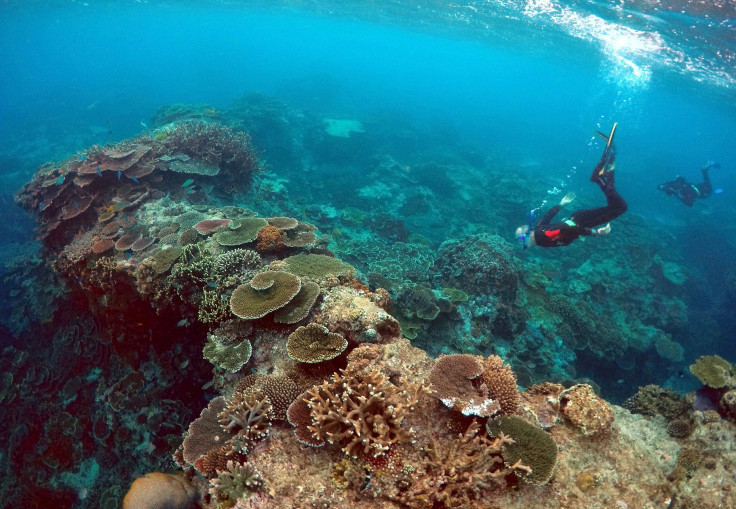Great Barrier Reef coral bleaching severe between Cairns and Townsville, set to worsen

Environmentalists and other experts suggest that the Great Barrier Reef coral bleaching is set to worsen this year. In 2016, the reef faced the most widespread bleaching in history that caused massive outrage across the world.
In-water and aerial surveys have confirmed an escalating impact from north to south. Russell Reichelt, Chairman of Great Barrier Reef Marine Park Authority (GBRMPA), said that in 2016, the amount of coral that died from coral bleaching is up from original estimates. By the end of 2017, there will be further coral cover decline. Surveys have been conducted by ARC Centre of Excellence for Coral Reef Studies, Australian Institute of Marine Science, Queensland Parks and Wildlife Service and Marine Park Authority.
Maximum mortality has occurred in the northern part of the reef with the most severe bleaching reported in the north of Port Douglas. An estimated 70 percent of the shallow water corals have died. There is significant variability within and between reefs. It has been confirmed that 29 percent of the shallow water corals died in 2016, which is more than the previous estimate of 22 percent. Experts predict further coral loss from second consecutive year of bleaching and also from effects of tropical cyclone Debbie, confirms SBS.
However, south of the reef has recovered a lot as the bleaching has receded there to a certain extent. In some parts there has been no bleaching. The reef has also been affected by other factors such as poor water quality from coastal run-off, coral disease and crown-of-thorns starfish. This year, the bleaching has followed similar patterns like 2016. It has been most severe between Cairns and Townsville. Coral bleaching has also been found in corals beyond depths that divers could typically survey, though mortality couldn’t be determined.
Australian Institute of Marine Science (AIMS) has been tracking coral cover in Great Barrier Reef since 1985. Since then it has been providing a holistic picture of the reef that includes coral loss from impacts and also coral growth from recovery. Data collected has shown a decline in coral cover since 1985.
“Combined with coral bleaching — which is predicted to become more frequent and more severe as a result of steadily rising ocean temperature — the long-term trend of coral decline is expected to continue and accelerate. Recovery from bleaching is also likely to be slower than from other impacts,” reads a GBRMPA statement, reports The Cairns Post.






